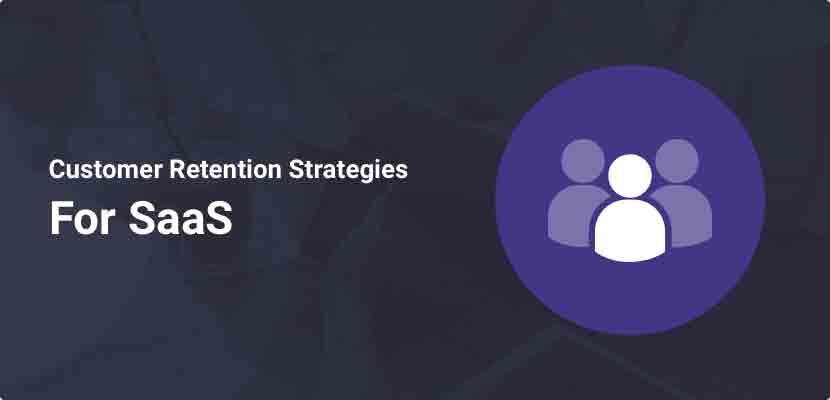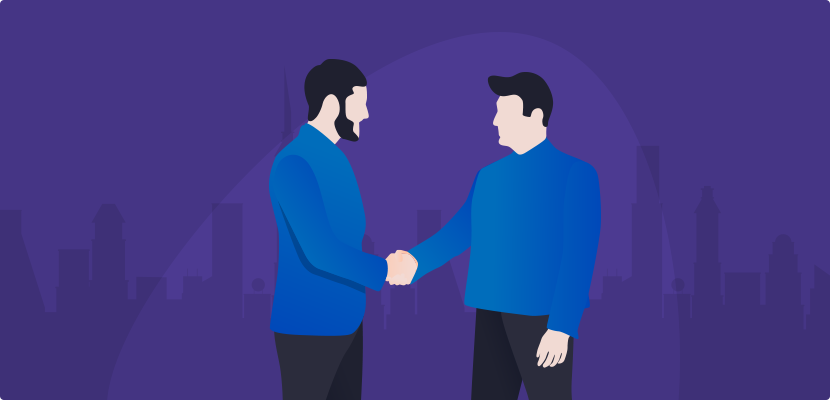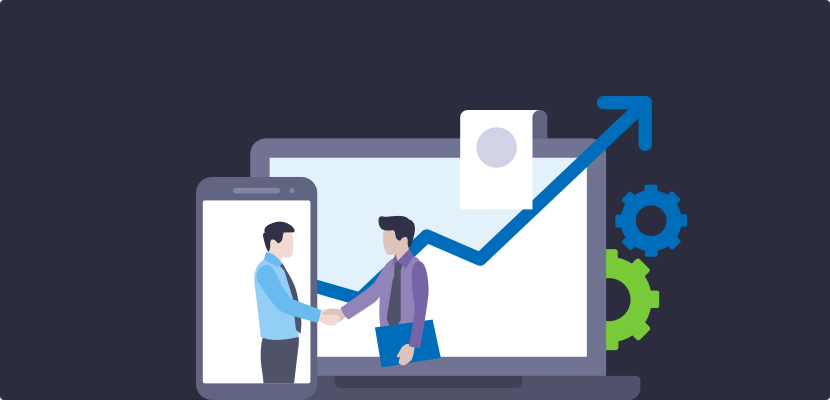
Customer churn is the SaaS kryptonite. It is what scares SaaS founders the most, and they are always innovating ways to beat it. Customer Retention is one of the most crucial and cost-effective SaaS retention strategies. Let’s talk about why.
Imagine your SaaS revenue bucket. Customer churn causes the holes through which your recurring revenue leaks out. Now, while acquiring more sources to fill in the bucket makes sense (customer acquisition), so does plugging the leaky holes (that is, customer retention). For SaaS, as we’ve said many times before, it is much easier to retain an existing customer than to acquire a new one – hence monitoring your SaaS retention metrics should be your priority for winning at the churn and retention cycle.
In fact, if you’re not doing customer retention right, it can result in a loss as you acquire more customers. The SaaS model gets you profitability over time, and if your users churn before completing enough payment cycles to break even on the acquisition costs, all your growth strategies will be ineffective.
Additionally, your current customers are some of your most promising users. They have already taken the effort of paying you and going through the onboarding process. You would be doing your business a disservice by not making sure these users stay.
Customer retention, in this sense, means getting your customer to stay and engage with your product long enough till it becomes a habit/ part of their daily lives. As they become long-term users, it will give you more opportunities to upsell, increasing their LTV (lifetime value). Long-term users are also much more likely to become promoters of your product, bringing in more users via word-of-mouth referrals. Customer retention results in an increasing customer value over time.
The strategies for b2b SaaS customer retention can be broken down into 3 categories:
Engagement
1. Set Customer Expectations
One of the major reasons for churn is user expectations not being met. This happens when the user is promised something which the product is not able to deliver on.
It is essential to be very clear in your messaging about how you add value for your users. Tell them exactly what they get when they sign up. Besides that is is a good practice to slightly underpromise on the perceived value add and overdeliver, which leads to customers being delighted. Even if you don’t practice this, remember that the vice versa, overpromising value and under delivering on it is a recipe for disaster.
2. Give them the “A-Ha” Moment
The “A-Ha” moment is the moment the customer starts seeing the value your service adds. From the moment a user signs up, the user experience should be targeted towards getting them to this moment as soon and as smoothly as possible. For this, focus on optimizing your onboarding. Send out instructional content initially to get users acquainted with the service and its features. If your service is more complex, it makes sense to offer free training to the users – people interested in your product will want to learn how it works, and by training them you’re guiding them to the “aha” moment.
3. Highlight your Value Proposition
Your value proposition is what makes your product unique. A good value proposition is simple, tells the users the concrete results they will get, and can be read and understood in about 5 seconds. It also avoids hype words and business jargon. Clarity is the key.
Constant delivery on the value proposition is a must. It is what your users signed up for, and it is what will get them to stay. It is also a good practice to remind them about your value proposition from time to time. Showing them what they’re gaining will encourage them to continue their subscription.
4. Upsell
The biggest benefit of long-term customers and forming relationships with them is also one of the best customer retention strategies. Users turn into long-term customers as they see the value you provide. Upselling is a win-win, users get better services, and you get more revenue. It also has a two-fold effect. You are now tackling multiple pain points for the user, so your relationship deepens. With higher billing amounts, the user commitment increases, making them more likely to stick around longer.
Delight
5. Send Targeted Tips For Increased Engagement
You can set up automated emails which get triggered when the user performs a specific action to engage them further. For example, if the user completes designing a sales page, you can send them an email saying, “Congratulations on setting up your first page. Here is how to get the best out of your sales pages”, and direct them to a blog or an informative video. You can also engage them in additional functionality here. For example, in this case, you could tell them how pairing your sales page with an exit pop-up can help, and direct them to the pop-up designer in your app. Help like this adds value to the customers’ efforts and makes them stay.
6. Maintain a Regular Interaction Schedule
Imagine subscribing to a service and hearing from them only when money is getting withdrawn from your bank account. Not pleasant, right? Via your interactions, you have to make the user mindful of the value you provide so they don’t end up associating you with the feeling of losing money for nothing.
This is why maintaining regular customer interaction is crucial for retention. Even if you don’t if you’re not regularly sending content heavy emails, call them once in a while just to say “hi” or see how they are doing with the product. It shows the users that you care beyond the money - you actually want to help them achieve their goals.
7. Keep Adding Upgrades and Releasing New Versions
This is another way to let users know that you’re working to help them achieve their goals. Invite constructive feedback on your product (more about this later), and keep improving your product via upgrades and new features. As users see more value over time, customer retention rates will keep increasing. Churn also occurs sometimes due to boredom –as users interact with a similar platform over time, it may result in decreased perceived value and lesser engagement consequently. Releasing new versions will help fight that.
8. Over The Top Customer Service
We’ve said before, and we’ll say it again – customer service can make or break an organization. Users may put up with a bug in your UI if you can solve their problem immediately, but a bad customer service experience will turn off most of them. In fact, 67% of users cite bad customer service experience as the primary reason for churn. Customer service issues are the experiences which speak to users about your attitude towards solving their problems. When solving these issues – practice delighting users. Always go overboard with your efforts. Think of any issue a user faces as a bump in the road to the perfect customer experience. Not only do you remove the bump, you also give the users something extra for their troubles.
9. Consider a Reward Program
When users do stay with you for a long time, you should reward them. Let them know you appreciate them sticking around. If done right, loyalty programs will help both the user and your company, making it a win-win.
Loyalty rewards don’t need to be complicated. A simple discount, upgrade, or a freebie (like a free month of subscription/upgrading their plan) can work wonders to invoke further loyalty.
Proactive Listening
10. Avoid Surveys on Service Tickets
Feedback on the customer service resolution experience can be a great way to optimize your process, but it can also annoy the user in unwanted ways. Put yourself in the users’ shoes. You faced an issue and went through the trouble of getting it resolved. Thankfully, (assuming) the resolution process was smooth. But now the team keeps on pestering you to give feedback on your experience. It’s the same as the annoying reporter asking a crash victim questions about their rescue as soon as they’re saved. The key to getting them to talk is the time and place.
11. Feedback From The Right Places
Ask for feedback in places where you need to make users feel a sense of being in power. So you could try placing a link on your pricing page, or when you send out your monthly newsletter etc. Make sure it is visually appealing and inviting for users to actually give their feedback.
12. Make Users Part of a Community
Building a support community around your brand is a great idea. It has benefits for both the user and the company. By getting to interact with other users and you, the users will get a feeling of belonging. That’s where you move from a formal to a personal relationship for them. Interacting with your users at a grassroots level is also a source of invaluable feedback. Moz’s feature request forum is a great example of a mix of these concepts. It allows users to ask for features they’d like to see, where either other users or the company representatives can reply.
13. Measure Engagement
Collecting user feedback at the right time and place is one of the most important factors for customer retention. With help of the right technology, you can do most of it without pestering the users to fill out annoying forms. This can be achieved by measuring their engagement with your product/website by tracking their behavior.
At Custify, we have developed the best tool which allows you to track all your user engagement KPIs in one dashboard. It also alerts you when users are exhibiting churn like behaviors so you can intervene at the right time with the right message. Better monitoring = more user retention.
14. Exit Surveys
Let’s be clear – if someone wants to leave, never make it hard for them to do it. This approach which works in real life holds true for SaaS as well. Make your cancellation policy super simple to avoid breakouts on social media by grumpy users. People mostly leave for a reason, and here you can leverage exit surveys to gain enormous insight into things you are doing wrong. This will help you increase retention for future users.
Psst: need more advice on customer retention? We’ve got your back with some foolproof ways to reduce churn - many of the same concepts and rules still apply, after all it’s all about being the best at customer success!
Conclusion
Customer Retention in SaaS is all about respecting the time and problems of the users and making it worth their while through the experience you offer. People will always be happy to pay to get their problems solved by someone who understands them. The better you understand your users, the longer you can get them to stay. What are your favorite user retention strategies? Feel free to leave us a comment.




